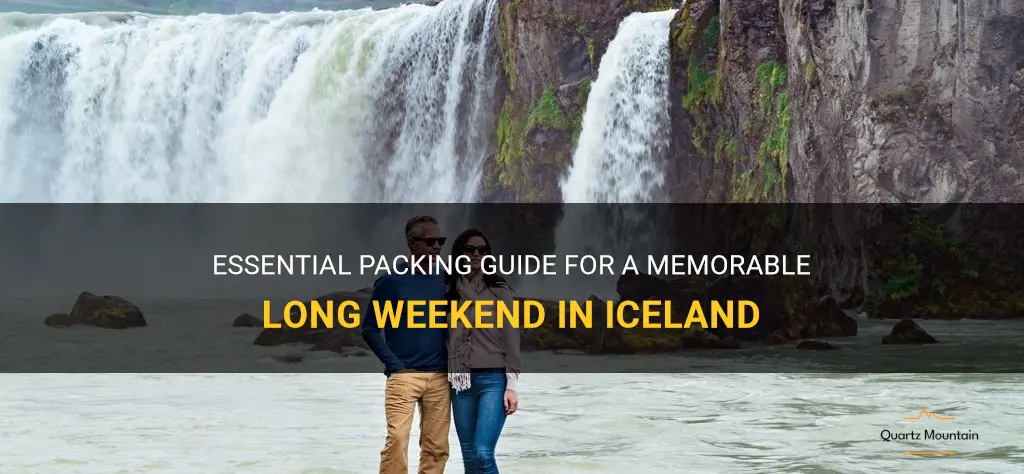
Are you planning a long weekend getaway to Iceland? If so, you're in for a treat! Iceland boasts stunning landscapes, mesmerizing waterfalls, and unique geothermal hot springs. Whether you're traveling to chase the Northern Lights or explore the rugged terrain, one thing is for sure: packing smartly can make or break your experience. In this essential packing guide, we'll help you navigate the tricky task of packing for a memorable long weekend in Iceland, ensuring that you're well-prepared for whatever adventure comes your way. From layering clothing to choosing the right footwear, let's make sure you're ready to make the most of your time in this breathtaking country.
| Characteristics | Values |
|---|---|
| Weather | Unpredictable. Expect temperatures between 30-50°F (-1 to 10°C) with rain, wind, and possibly snow. Dress in layers and bring a waterproof jacket and pants. |
| Clothing | Warm and waterproof clothing, including thermal base layers, fleece or insulated jackets, hats, scarves, and gloves. Pack sturdy, waterproof hiking boots. Bring swimwear for hot springs. |
| Accessories | Sunglasses, sunscreen, and a hat for protection from the sun. Pack a reusable water bottle, snacks, and a backpack for day trips. Bring a power adapter for Icelandic electrical outlets. |
| Documents | Passport, travel insurance, and a printed copy of your itinerary. Keep a digital copy of important documents on your phone or cloud storage. |
| Medications | Prescription medications and over-the-counter remedies for common ailments such as headaches, colds, and stomach issues. |
| Electronics | Camera, extra batteries, and memory cards for capturing the stunning landscapes. Bring a phone charger and any other electronics you may need. |
| Money | Icelandic currency (ISK) in cash for small expenses such as souvenirs or food from local vendors. Credit cards are widely accepted but not always in remote areas. |
| Toiletries | Toothbrush, toothpaste, shampoo, conditioner, soap, and any other personal toiletries you require. Pack a microfiber towel for drying off after visiting hot springs. |
| Entertainment | Books, magazines, or electronic devices with downloaded movies or shows for entertainment during travel or downtime. |
| Outdoor Gear | Hiking poles, camping gear, or other outdoor equipment if planning to engage in activities such as hiking, camping, or fishing. |
| First Aid Kit | Band-Aids, antiseptic ointment, pain relievers, tweezers, and any other necessary medical supplies. |
What You'll Learn
- What are the essential clothing items to pack for a long weekend in Iceland?
- What kind of footwear is recommended for exploring Iceland's diverse landscape?
- Are there any specific accessories or gear that are necessary for a long weekend in Iceland?
- How should I pack for changing weather conditions in Iceland?
- What are some additional items to consider packing for specific activities like hiking or swimming in hot springs?

What are the essential clothing items to pack for a long weekend in Iceland?
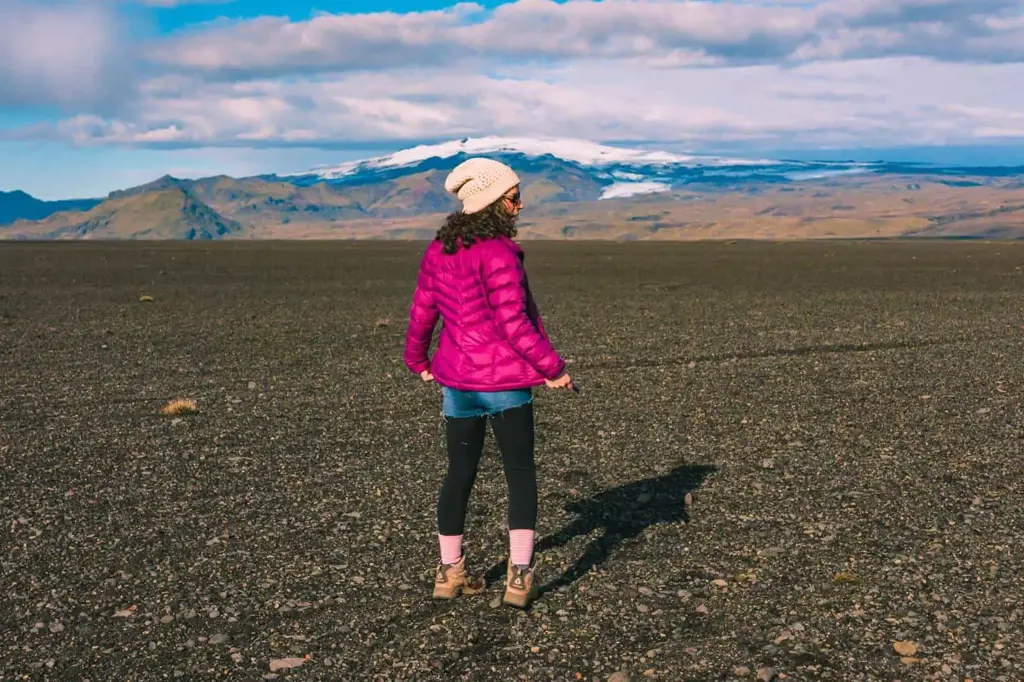
When packing for a long weekend in Iceland, it is crucial to choose clothing items that will keep you warm and comfortable in the country's notoriously unpredictable weather conditions. From icy winds to sudden rain showers, being prepared with the right clothing can make or break your trip. Here are some essential clothing items to pack for a long weekend in Iceland.
- Thermal Layers: Start with a base layer of thermal clothing. Thermals, made from moisture-wicking materials such as Merino wool or synthetic fabrics, will help regulate your body temperature and keep you warm even in freezing temperatures. Opt for long-sleeved tops and leggings to provide full coverage.
- Insulated Jacket: A high-quality insulated jacket is a must for Iceland's cold climate. Look for one that is windproof, waterproof, and breathable. A down or synthetic-filled jacket will provide excellent insulation, trapping heat while keeping you dry in case of rain or snow.
- Waterproof Pants: Don't forget to pack a pair of waterproof pants. These will come in handy during outdoor activities such as hiking or exploring waterfalls, where you may encounter wet conditions. Look for pants that are lightweight, breathable, and have good insulation to keep your legs warm.
- Fleece or Wool Sweater: Layering is key in Iceland, so be sure to pack a warm sweater. Fleece or wool sweaters are ideal, as they provide extra insulation and can be easily added or removed depending on the weather. Opt for a thicker sweater for colder months and a lighter one for milder seasons.
- Wool Socks: Keep your feet warm and dry with a few pairs of wool socks. Wool is an excellent material for socks as it naturally wicks away moisture and provides insulation. Invest in a couple of pairs designed specifically for outdoor activities to ensure maximum comfort and durability.
- Hat and Gloves: Don't forget to pack a hat and gloves to protect your extremities from the cold. Look for items made from materials such as wool or fleece that provide insulation and cover the ears and hands fully.
- Waterproof Boots: Sturdy, waterproof boots are a must for exploring Iceland's rugged terrain. Opt for boots with good traction to help navigate icy or slippery surfaces. Look for a pair that is insulated and has ankle support for added stability.
- Scarf and Neck Gaiter: Keep your neck and face protected from the cold winds with a warm scarf or neck gaiter. These versatile accessories can also be used to cover your nose and mouth if the wind becomes too harsh.
- Waterproof Backpack: Lastly, invest in a waterproof backpack to protect your belongings from the elements. This is particularly important if you plan on partaking in outdoor activities or hiking, as sudden rain showers can soak your gear.
Remember to pack extra layers, as weather conditions in Iceland can change rapidly. By packing the right clothing items, you'll be able to enjoy your long weekend in Iceland comfortably and make the most of your adventures.
Essential Items to Pack in Your Summit Pack for a Successful Outdoor Adventure
You may want to see also

What kind of footwear is recommended for exploring Iceland's diverse landscape?
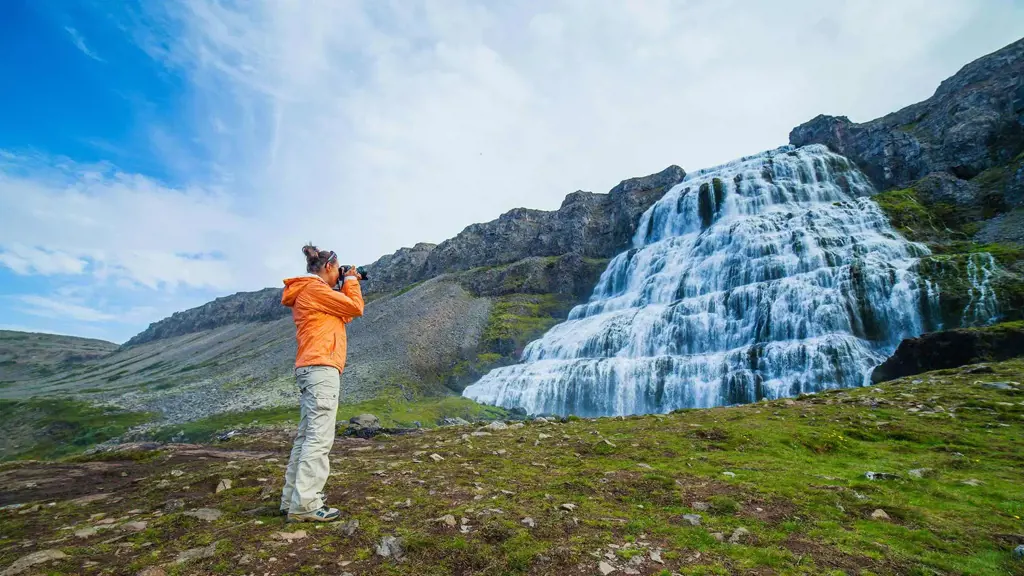
When exploring the diverse landscape of Iceland, it is essential to wear the appropriate footwear to ensure comfort, safety, and enjoyment. The unique geological features and variable weather conditions of the country make it crucial to choose footwear that can withstand different terrains and protect your feet from potential hazards. In this article, we will explore the types of footwear recommended for exploring Iceland's diverse landscape.
Hiking Boots:
Hiking boots are a popular choice among outdoor enthusiasts due to their durability and ankle support. When exploring Iceland, you may encounter rough and uneven terrain, slippery surfaces, and rocky landscapes. Hiking boots provide the necessary traction and stability, making them an excellent choice for hiking trails, mountains, and glaciers. Look for boots with a high ankle cuff for added support and a rugged sole for grip on wet or icy surfaces.
Waterproof or Water-resistant Boots:
Iceland is known for its unpredictable weather, including rain, snow, and mud. Therefore, it is crucial to invest in footwear that can withstand these conditions. Waterproof or water-resistant boots will keep your feet dry even when walking through wet or snowy terrain. Additionally, such boots provide insulation, preventing your feet from getting cold when exposed to water or freezing temperatures.
Crampons or Ice Cleats:
If you plan to explore Iceland's glaciers or visit during the winter months, crampons or ice cleats are essential. These devices attach to the soles of your boots and provide additional traction on icy surfaces, ensuring stability and preventing slips and falls. Glacier hikes or ice cave explorations can be treacherous without the right footwear, so it is advisable to invest in crampons or ice cleats for these activities.
Sandals or Water Shoes:
During the summer months, Iceland experiences milder temperatures, allowing for various outdoor activities like visiting hot springs or exploring waterfalls. Sandals or water shoes with sturdy soles and straps are ideal for these activities. They offer ventilation for your feet while protecting them from sharp rocks or slippery surfaces.
Gaiters:
Gaiters are protective coverings worn over the lower leg and top of your footwear. They help keep debris, water, and snow from entering your boots, providing extra protection during muddy or wet conditions. Gaiters are especially useful when hiking through areas with low vegetation or walking on sandy or snowy terrain.
It is important to note that regardless of the footwear you choose, it is crucial to break them in before your trip to avoid blisters or discomfort. Additionally, always check the current weather and trail conditions before setting out and adjust your footwear accordingly.
In summary, when exploring Iceland's diverse landscape, it is recommended to wear hiking boots with ankle support and a rugged sole. Waterproof or water-resistant boots are essential to protect your feet from the country's unpredictable weather. Crampons or ice cleats are necessary for glacier hikes and ice cave explorations. Sandals or water shoes are ideal for summer activities, and gaiters provide additional protection against debris and moisture. By choosing the appropriate footwear, you can ensure a comfortable and safe exploration of Iceland's remarkable natural wonders.
Essential Makeup Items to Pack for Travel
You may want to see also

Are there any specific accessories or gear that are necessary for a long weekend in Iceland?
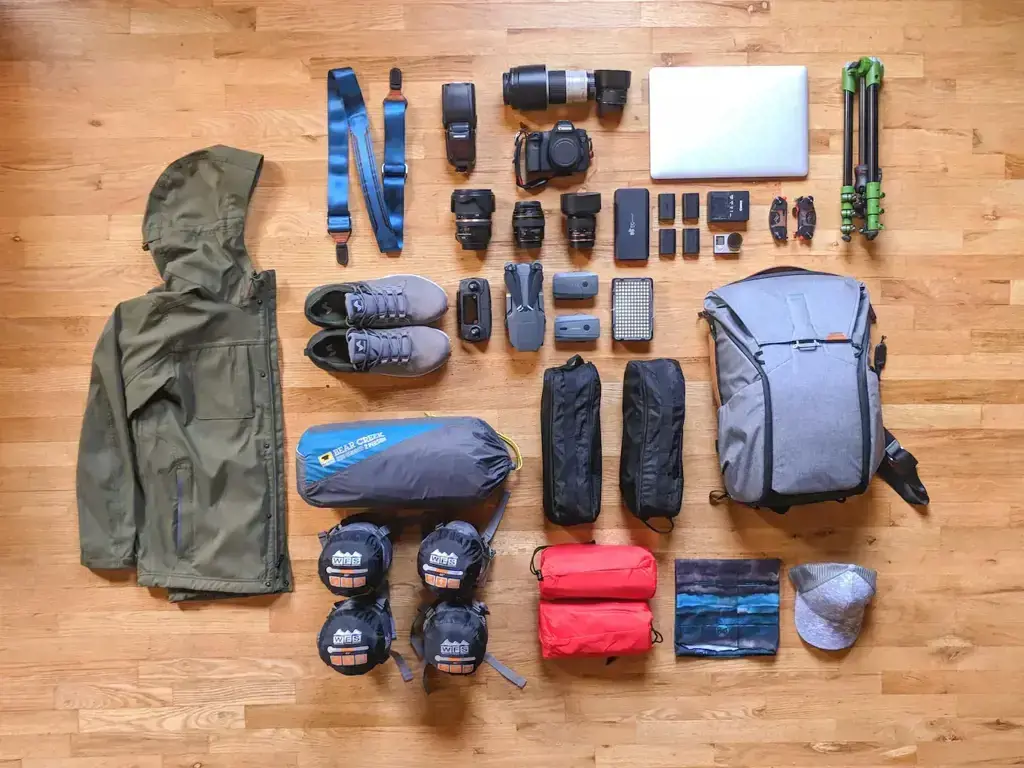
Iceland is a breathtakingly beautiful country with its stunning landscapes, hot springs, and waterfalls. If you are planning for a long weekend in Iceland, it is essential to pack the right accessories and gear to ensure a comfortable and safe trip. The unpredictable weather, rough terrains, and unique outdoor experiences make it necessary to be well-prepared. Here are some specific accessories and gear that are necessary for a long weekend in Iceland:
- Waterproof Clothing: Iceland is known for its wet weather, so it is crucial to have waterproof clothing. Invest in a good quality waterproof jacket and pants to stay dry during your outdoor activities. Additionally, pack waterproof gloves, hats, and boots to protect yourself from the rain, snow, and cold winds.
- Layers of Clothing: The weather in Iceland can change rapidly, so dressing in layers is essential. Bring thermal base layers, fleece jackets, and sweaters that can be easily removed or added as needed. This way, you can adjust your clothing according to the weather conditions and stay comfortable throughout your trip.
- Hiking Boots: If you plan on exploring Iceland's beautiful landscapes, a sturdy pair of hiking boots is a must. Opt for waterproof, ankle-high boots with good traction to provide stability and support on uneven terrains. It is also advisable to break in your boots before your trip to avoid any discomfort or blisters.
- Outdoor Essentials: Don't forget to pack essential outdoor gear such as a sturdy backpack, a water bottle, a compass, and a map of the areas you are planning to visit. These items will come in handy during hikes and other outdoor activities.
- Power Banks: In remote areas of Iceland, it might be challenging to find electricity to charge your devices. Invest in a high-capacity power bank to ensure that your phone, camera, and other electronics don't run out of battery during your trip.
- Travel Adapter: Iceland uses a different type of electrical outlet, so make sure to pack a travel adapter to charge your devices. This small accessory can easily be overlooked but is essential for staying connected and recharging your electronics.
- Swimwear and Towel: Don't miss the opportunity to relax in one of Iceland's famous hot springs or geothermal pools. Pack swimwear and a quick-drying towel to enjoy these unique natural attractions.
- First Aid Kit: It is always smart to have a basic first aid kit with you, especially if you plan on engaging in outdoor activities. Include items such as bandages, antiseptic wipes, pain relievers, and any necessary prescription medication.
- Headlamp or Flashlight: The long summer days in Iceland might trick you into thinking you won't need a headlamp or flashlight. However, if you plan on exploring caves or going on midnight hikes, having a reliable light source is crucial.
- Camera and Binoculars: Iceland is known for its awe-inspiring landscapes and diverse wildlife. Carry a camera to capture the stunning scenery and binoculars to spot birds, seals, and other wildlife along the way.
Remember to do thorough research on the specific activities you plan on doing in Iceland to determine if any additional gear is necessary. Whether you are chasing waterfalls, exploring ice caves, or relaxing in hot springs, having the right accessories and gear will enhance your experience and ensure a safe and enjoyable long weekend in Iceland.
Essential Items to Pack for Scoliosis Surgery
You may want to see also

How should I pack for changing weather conditions in Iceland?
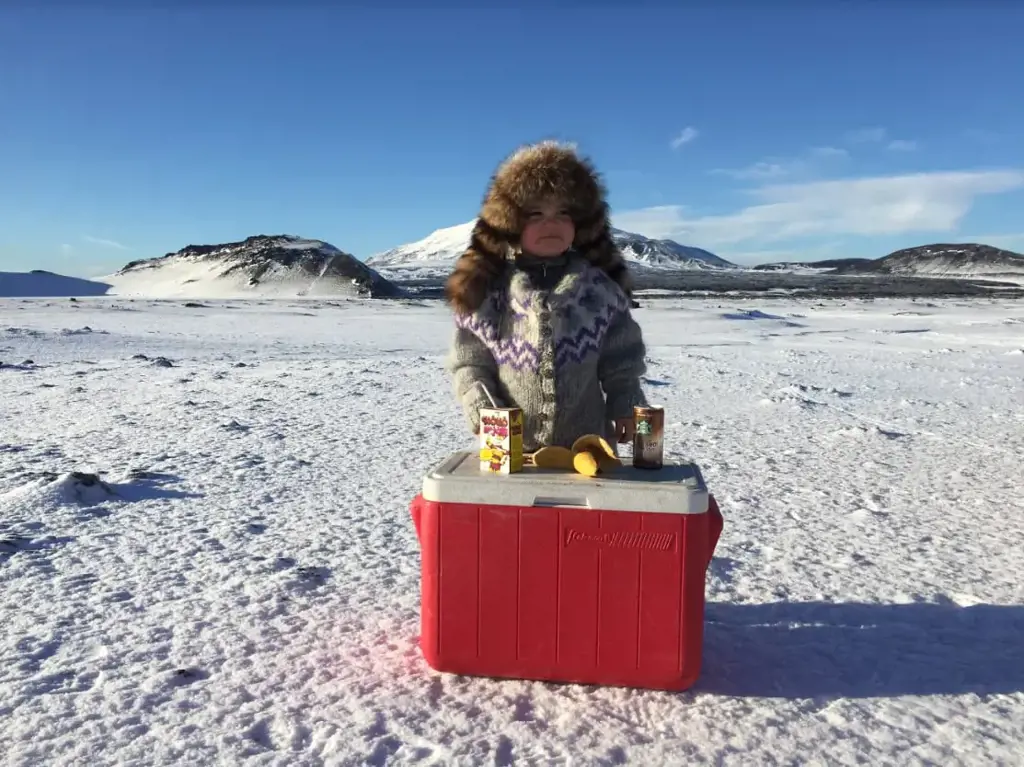
Iceland is known for its unpredictable and ever-changing weather conditions. One minute it can be sunny, and the next minute it can be rainy and windy. Therefore, it is essential to pack smartly and be prepared for all types of weather during your trip to Iceland. Here are some tips on how to pack for changing weather conditions in Iceland.
- Layering is key: The key to staying warm and dry in Iceland is layering your clothing. Start with a base layer made of moisture-wicking material such as merino wool or synthetic fibers. This layer will help keep you dry by wicking away sweat from your body. Add a mid-layer such as a fleece jacket or down vest for insulation. Finally, top it off with a waterproof and windproof outer layer to protect you from the elements. This way, you can easily add or remove layers depending on the weather conditions.
- Pack waterproof and windproof gear: As mentioned earlier, the weather in Iceland can change rapidly, so it is crucial to have waterproof and windproof gear. Invest in a good quality waterproof jacket and pants to keep you dry in case of rain or snow. Also, don't forget to pack a hat, gloves, and a scarf to protect your extremities from the cold wind.
- Choose the right footwear: Iceland is known for its rugged terrains and unpredictable landscapes. Be prepared for wet and muddy conditions by packing sturdy and waterproof hiking boots. These will provide you with the necessary traction and support during your outdoor adventures.
- Don't forget your swimwear: Iceland is famous for its geothermal hot springs and natural thermal pools. Don't miss the opportunity to relax and unwind in these unique attractions. Pack your swimwear, a towel, and a waterproof bag to store your wet items after your swim.
- Pack for all seasons: Even though you may be visiting Iceland during the summer months when the weather is relatively milder, it is still essential to pack for all seasons. This means bringing both warm and cool weather clothing. Don't forget to pack a warm hat, gloves, and socks, as the temperature can drop unexpectedly even in the summer.
- Be prepared for the wind: Iceland is known for its strong winds, especially along the coast. Pack a windproof hat or a headband to protect your ears and prevent heat loss. Additionally, consider packing sunglasses to protect your eyes from the wind and glare.
- Bring a reusable water bottle: Drinkable water is abundant in Iceland, thanks to its pristine glaciers and natural springs. Stay hydrated during your trip by bringing a reusable water bottle. It will save you money and reduce plastic waste.
- Pack essential medications and toiletries: It's always a good idea to bring essential medications and toiletries with you, especially if you have specific medical needs. Pack a small first aid kit, any prescription medications, and personal care items such as sunscreen, lip balm, and moisturizer.
In conclusion, packing for changing weather conditions in Iceland requires careful planning and preparation. By layering your clothing, packing waterproof gear, choosing the right footwear, and being prepared for all seasons, you can ensure that you are ready for any weather scenario. Don't forget to bring swimwear, protect yourself from the wind, and stay hydrated. With these tips in mind, you can enjoy your trip to Iceland without worrying about the ever-changing weather conditions.
Essential Items to Pack for a Two-Year Study Abroad Experience
You may want to see also

What are some additional items to consider packing for specific activities like hiking or swimming in hot springs?
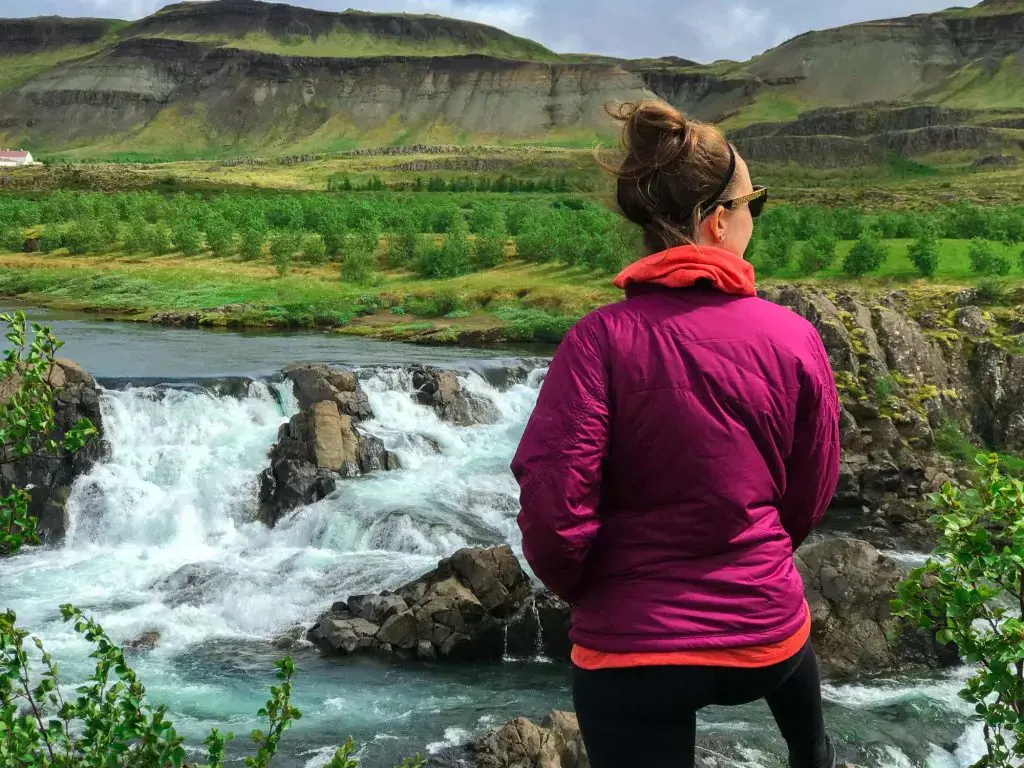
When heading out for specific activities like hiking or swimming in hot springs, it's important to pack the right gear to ensure a safe and enjoyable experience. While the essentials like water, sunscreen, and comfortable shoes are a given, there are a few additional items that can enhance your adventure. Here are some items to consider packing for hiking or swimming in hot springs:
- Hiking poles: Hiking poles can provide added stability and support while navigating uneven terrain. They help redistribute weight and reduce strain on your knees, making your hike more comfortable and safer.
- First aid kit: It's always a good idea to have a first aid kit handy when hiking or swimming in hot springs. Include essential items like adhesive bandages, antiseptic wipes, pain relievers, and any necessary prescription medications. Also, consider packing items like blister pads, insect repellent, and tweezers for ticks.
- Waterproof backpack or dry bag: When hiking or swimming, you want to protect your belongings from getting wet. A waterproof backpack or dry bag will keep your electronics, extra clothes, and snacks dry and secure. This is especially important if you plan on crossing streams or hiking in wet conditions.
- Quick-drying towel: After a swim in hot springs, you'll want a towel that dries fast to avoid carrying around a heavy, wet towel. Look for a lightweight, microfiber towel that is compact and dries quickly. These towels are also great for wiping away sweat during a hike.
- Water shoes: If you plan on hiking near water or swimming in hot springs, consider packing a pair of water shoes. These shoes are designed to provide traction on slippery surfaces and protect your feet from rocks or sharp objects. They are lightweight and quick-drying, making them perfect for outdoor water activities.
- Extra layers: Depending on the weather and location, temperatures can vary during a hike or while swimming in hot springs. Make sure to pack extra layers such as a lightweight jacket, long-sleeve shirt, or a hat to protect yourself from the sun. Layering allows you to adjust your clothing to stay comfortable and protected throughout the day.
- Snacks and hydration: Hiking or swimming in hot springs can be physically demanding, so it's important to stay fueled and hydrated. Pack lightweight, non-perishable snacks like energy bars, nuts, or dried fruit. Bring plenty of water or consider investing in a water filtration system to refill your water bottle along the way.
- Navigation tools: If you're hiking in an unfamiliar area, bring a map, compass, or GPS device to help navigate the trails. Your smartphone can also serve as a useful tool, but it's a good idea to have a backup navigation option in case of a dead battery or poor reception.
Remember, the specific items you'll need may vary depending on the duration and difficulty of your hike or swim. Always research your destination beforehand and consider the climate, terrain, and any specific requirements or recommendations. By packing these additional items, you'll be well-prepared for a safe and enjoyable adventure.
Essential Items to Pack for Your Child's First Day of Kindergarten
You may want to see also
Frequently asked questions
When packing for a long weekend in Iceland, it's important to be prepared for unpredictable weather. Make sure to pack warm and waterproof clothing, such as a good quality waterproof jacket, waterproof pants, insulated layers, hats, gloves, and warm socks. It's also a good idea to bring a swimsuit, as Iceland is known for its geothermal hot springs and natural pools. Additionally, don't forget to pack sturdy walking shoes or hiking boots, as there are plenty of stunning landscapes to explore.
Yes, it is highly recommended to pack thermal clothing for a long weekend in Iceland. The weather can be very cold, even in the summer, so thermal base layers will help keep you warm. Merino wool or synthetic materials are great options for thermal clothing, as they provide insulation and wick away moisture, keeping you comfortable in different weather conditions.
It's a good idea to pack accessories that will protect you from the elements. Bringing a warm hat, a scarf, and gloves will help keep you warm, especially during windy conditions. It's also worth packing sunglasses and sunscreen, as the sun can be intense, even during winter. Additionally, bringing a reusable water bottle and a travel adapter for your electronics are practical items to include in your packing list.
While you can find most toiletries in Iceland, it's always a good idea to pack travel-sized versions of your favorite products. Iceland's water is known for being pure and clean, so you can enjoy drinking tap water without the need to buy bottled water. However, if you have specific skincare needs, it's best to bring your own products. Don't forget to pack a good quality lip balm and moisturizer, as the cold and windy weather can be harsh on your skin.
If you plan on engaging in outdoor activities such as hiking or exploring glaciers, it's important to be well-equipped. It's recommended to pack a backpack with essentials such as a first aid kit, a map and compass, a headlamp or flashlight, extra batteries, and a multi-tool. Also, bringing a travel towel and a dry bag to protect your belongings from rain or snow can be useful. Lastly, don't forget to bring a camera or a smartphone with a good camera to capture the stunning landscapes and unique experiences during your long weekend in Iceland.







